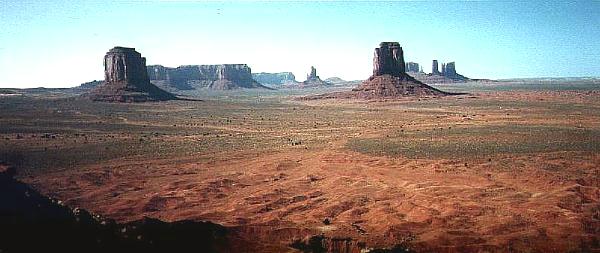
Ecological interactions (continued)
Lecture
graphics
- Any study of a pop'n or community should consider resources--they
will virtually always play a role in organizing communities
- other factors, such as weather, predation, or herbivory may
be important
Kind of resources
Resource (Tilman 1982): any substance or factor which is
consumed by an organism and which can
lead to increased growth rates as its
availability in the environment is
increased
There are only a few basic elements which are resources for
living organisms [Keddy 1989 Table 1.1, p. 4]
Various classification systems have been developed for resources:
- Trophic position
- Consumers of resources are commonly classified by trophic
position--autotrophs vs. heterotrophs
- Problems w/ using trophic position to classify organisms:
- many animals change trophic level w/ changes in age,
season, or climate
- The chemical composition of organisms is remarkably
constant, which makes the distinction between autotrophs and
heterotrophs seem particularly arbitrary
- Temporal and spatial distribution
- Types of resources, based on how they vary w/ time:
[Keddy 1989 Fig. 1.1, p. 6]
- Increasing: gradually increases over the active
season of an organism, then suddenly
declines
- Decreasing: produced suddenly at the beginning of a
season, then gradually declines
- Pulsing (ephemeral): increase & decline rapidly
- Steadily renewed: continuously renewed over long
periods
- More elaborate classification systems incorporate spatial
variation (not just temporal variation) in resource
availability [e.g., Keddy 1989 Fig. 1.2, p. 8]
- Mode of consumption
- "Consumptive" competition: organisms harvest a fraction
of a resource over a large
area
- "Space" competition: organisms harvest all of a resource
from a fraction of the area
- Resource ratios [ref. Tilman 1985 Am. Nat. 125:827-852;
economic parallels illustrated by Trepl
1994 Ecol. Modelling 75/76:71-82]
- Organisms usu. must forage for more than 1 resource -->
Tilman's ideas about resource ratios
- Essential resources can not be substituted for each
other, whereas
- Substitutable resources can be interchanged, to varying
degrees
- Growth isoclines indicate resource type [Keddy 1989
Fig. 1.3, p. 10]:
- solid lines are zero growth isoclines, shaded
areas indicate regions of negative growth
- Substitutable resources can be further classified,
based on degree of substitution:
- perfectly substitutable resources
- complementary resources--have a synergistic
effect, so that combinations produce more growth
than equivalent amounts of either resource alone
- antagonistic resources--interfere w/ each other
when consumed, so that a mixture of the 2 reduces
growth relative to either resource by itself
Previous
lectureNext lecture
